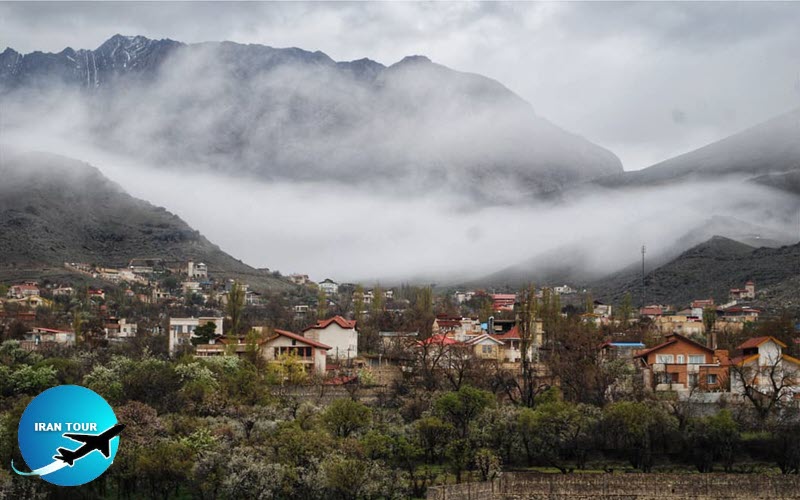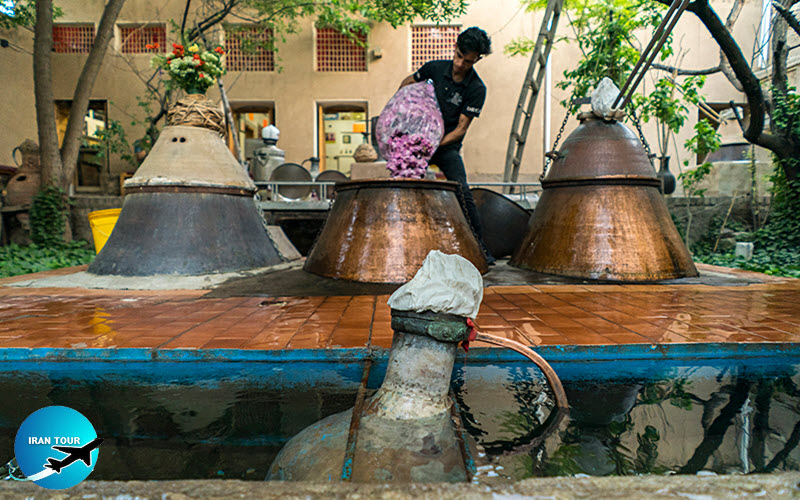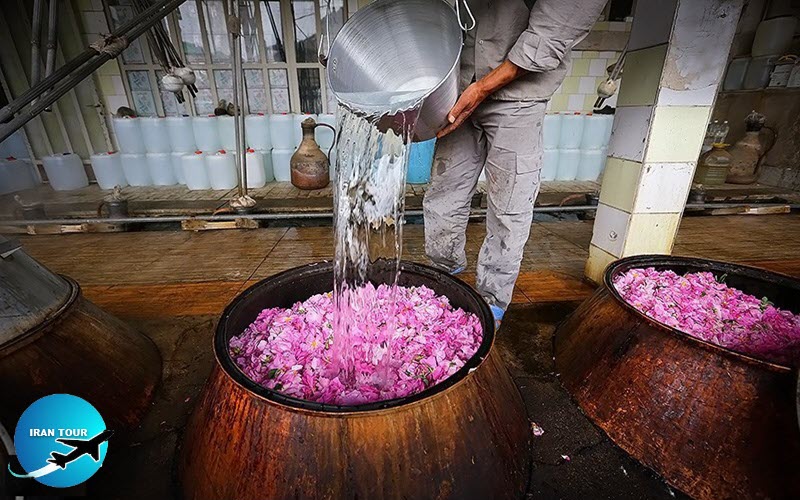Copyright 2020 - 2021 irantour.tours all right reserved
Designed by Behsazanhost
Qamsar city of Rosewater
Qamsar
The town of roses and rosewater, Qamsar is located south of Kashan on the slopes of the Karkas Mountain. A road to Qamsar passes through a fine Safavid caravanserai that has recently been registered with the Iranian Cultural Heritage and Tourism Organization. A little before Qamsar, on the left, the road branches off to Qohrud. This small settlement on the old caravan route has a fine mosque with some valuable relics from the Il-Khanid period and a Safavid dam. With its refreshing climate and lush rose gardens, Qamsar is a popular summer resort for Kashan residents.
 |
It is a pretty, crispy clean little town and a renowned center of rosewater production. Reportedly, it is the largest source of rosewater in the Middle East. In May, the town becomes home to a festival of roses and rosewater and is frequented by visitors from all over Iran. The pleasant climate of Qamsar has been appreciated by desert dwellers since ancient times. Rulers of many Iranian dynasties built magnificent structures here. Unfortunately, earthquakes and spring floods have been unmerciful to the buildings, most of which have been completely destroyed and never rebuilt. One of the most beautiful constructions was created here at the order of Shah Abbas II and served to accommodate a prominent theologian of Kashan, Mullah Mohammad Mohsen Feiz, who spent the summertime here. Shah Abbas II himself often joined him here for theological disputes. Sadly, this building was ruined in the early 19th century.
 |
Mausoleum of Pir Davud
Accounts differ as to the descent of Davud ibn Hasan, but most sources call him the great-grandson of Imam Ali. His mausoleum is located on the upper slopes of Qamsar and overlooks the lush orchards of the lower town. The structure dates from the Safavid period. Today the mausoleum stands in a city park, but in the past, it had a more traditional look: the courtyard was surrounded by pilgrims lodgings, and each of the courtyard's sides was emphasized by a lofty ٍivan. The tall, pyramidal dome of the mausoleum is encrusted with turquoise tiles. Inside the crypt, Imamzadeh's tombstone is topped with a sarcophagus made of fretted wood. The tombstone used to be covered with valuable old tiles, but, after several unsuccessful attempts at looting, these tiles have been covered with plaster.
Village Mosque
This tiny village mosque is completely new. Its only ancient relic is a broken but beautiful stucco mihrab, dating perhaps from the 12th century. It has two inscriptions, one in Tholth and the other in elegant Kufic script. It is one of the earliest examples of the use of Tholth script in religious buildings. The mihrab closely resembles the mihrab of the Kucheh Mir Mosque (p215) in Natanz.
 |
Rosewater or Persian Golab
is commonly used to flavor food, and it is also a component in some cosmetic and medical preparations. In Iran, it is added to tea, ice cream, cookies, and other sweets in small quantities. It is also widely used for religious purposes throughout Europe and Asia. Rose perfumes are made from Atr of roses or rose oil, which is a mixture of volatile essential oils obtained by steam-distilling the crushed petals of roses, a process first developed in Iran. Rosewater is a by-product of this process.
- Details
- Category: Where to go in IRAN